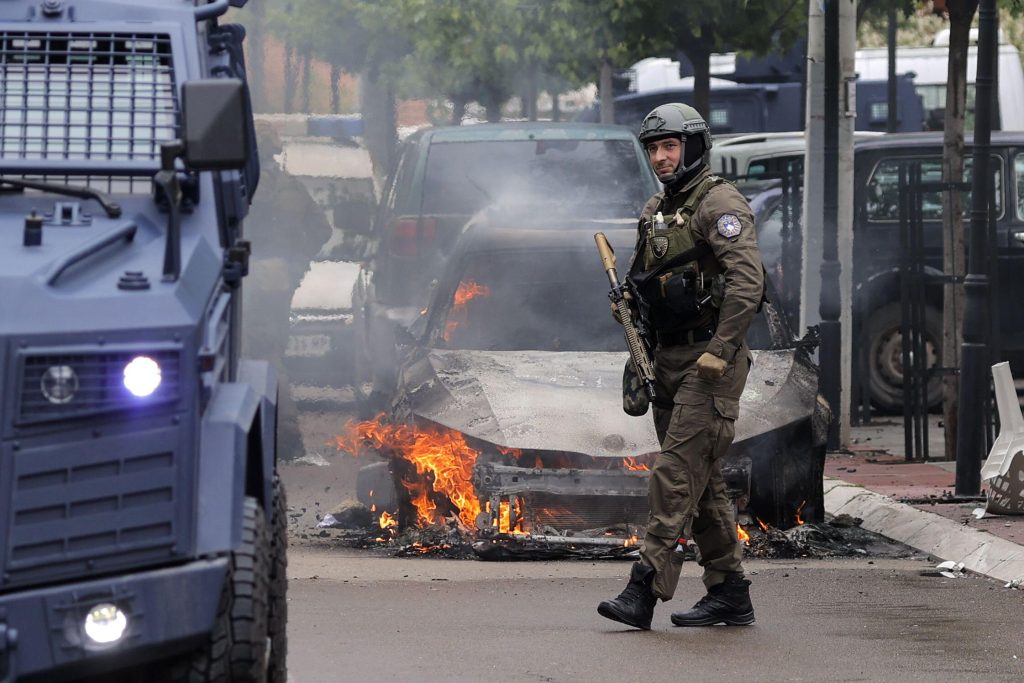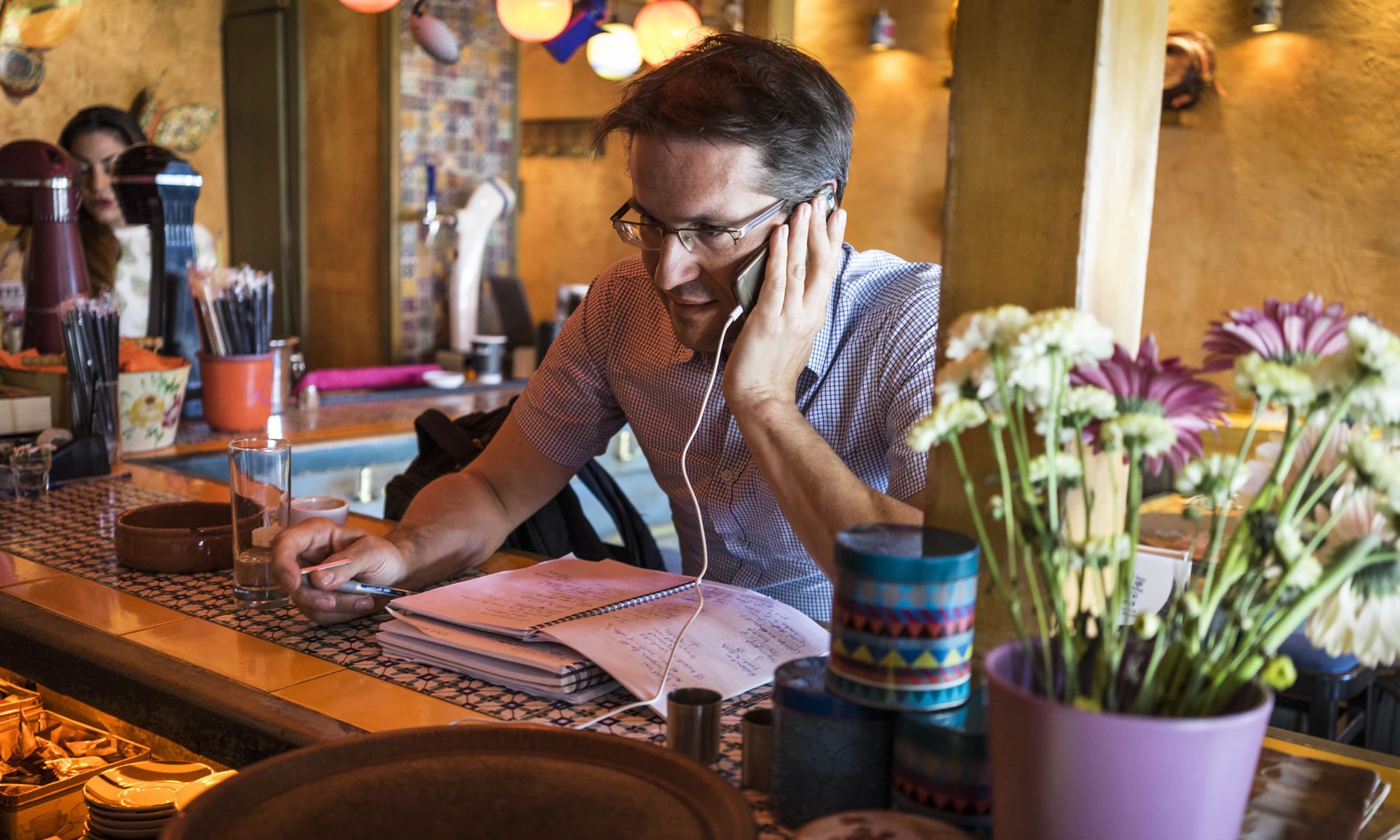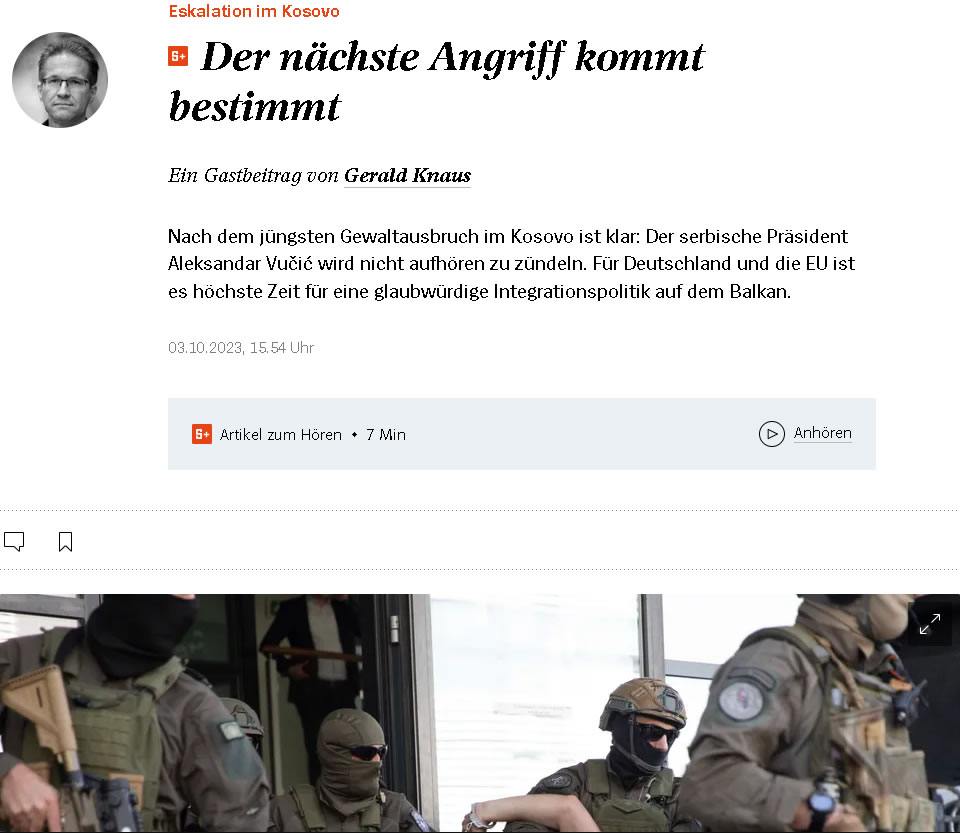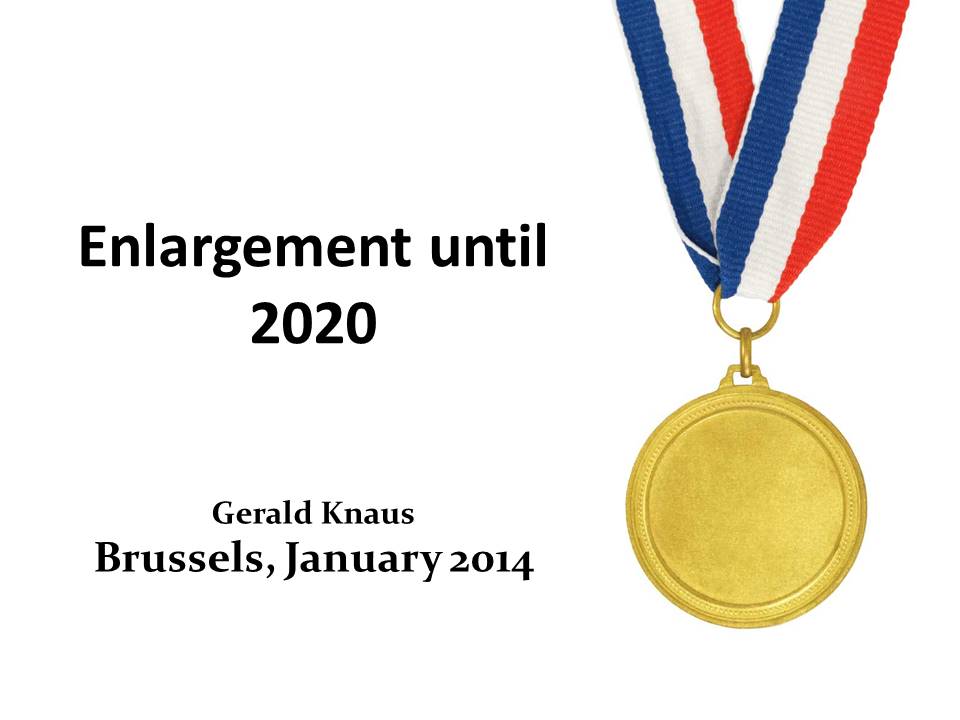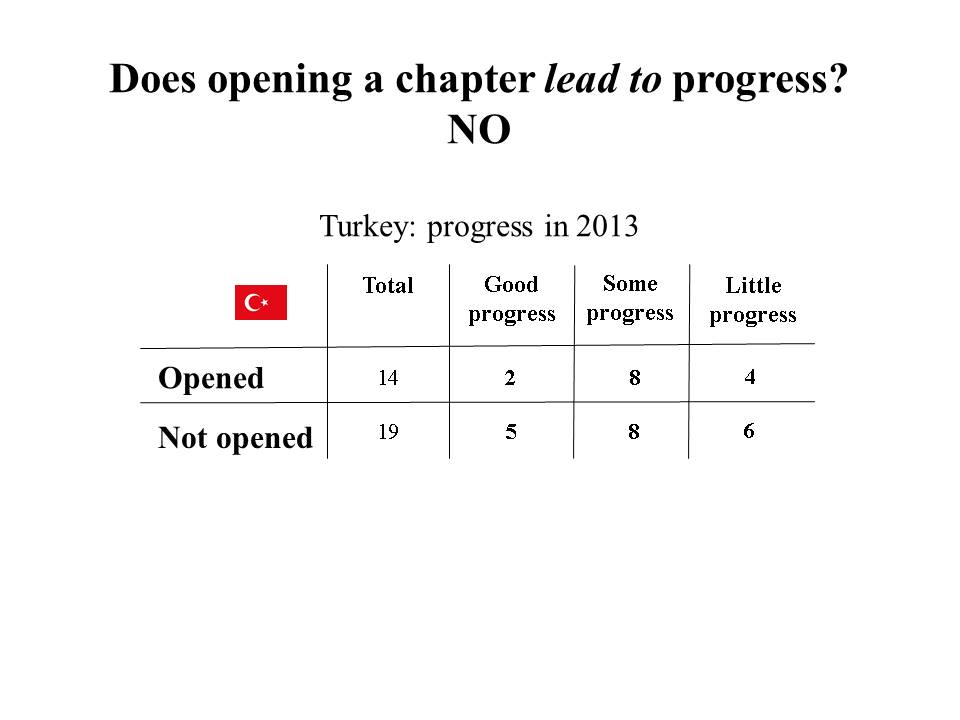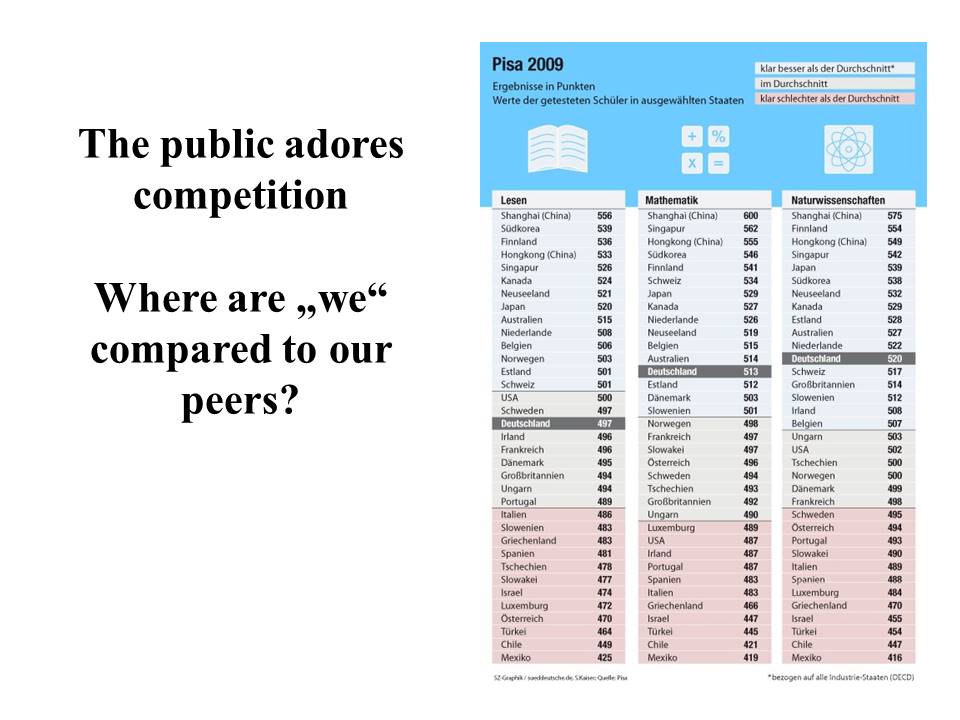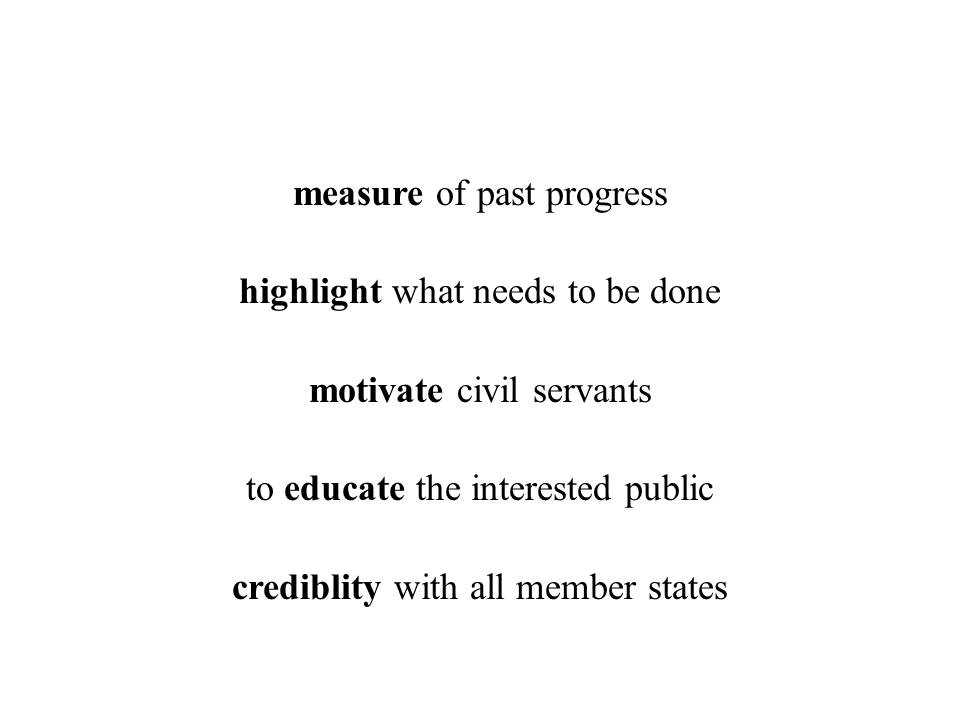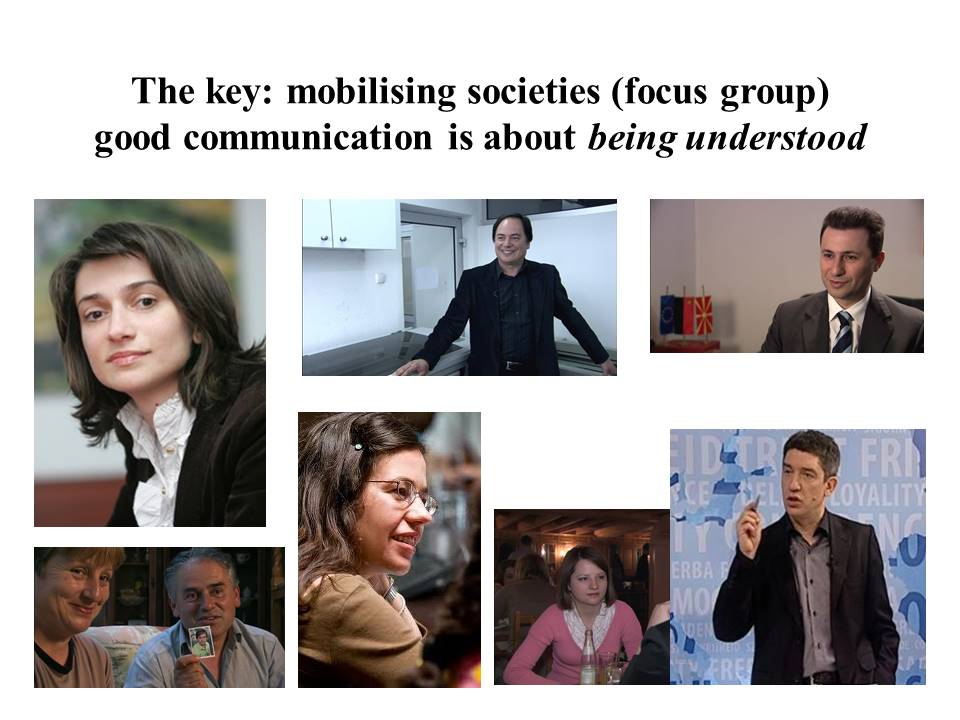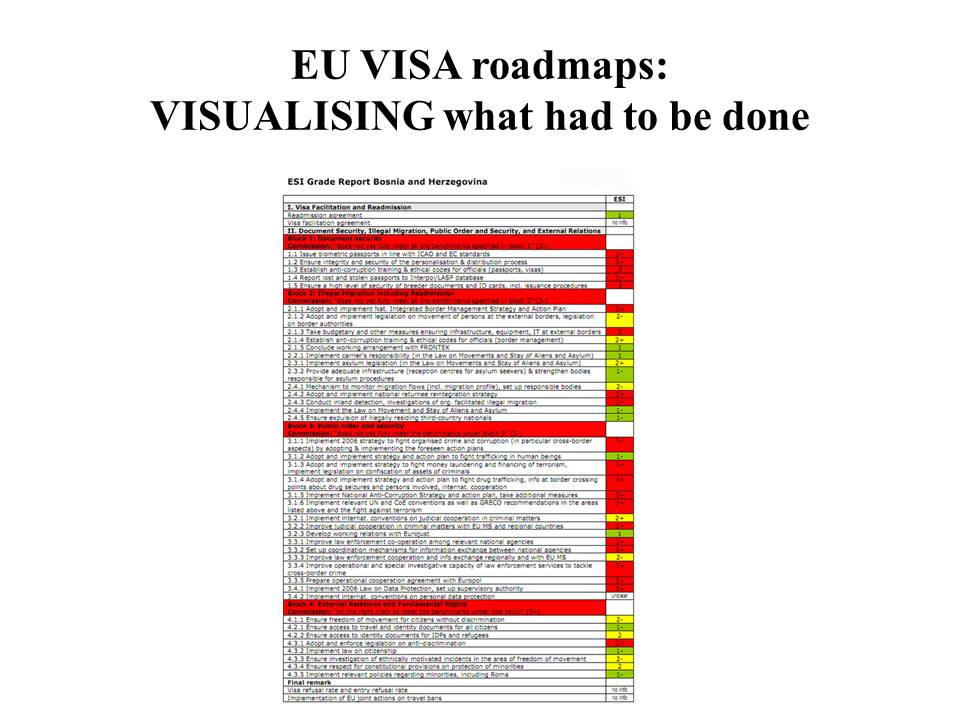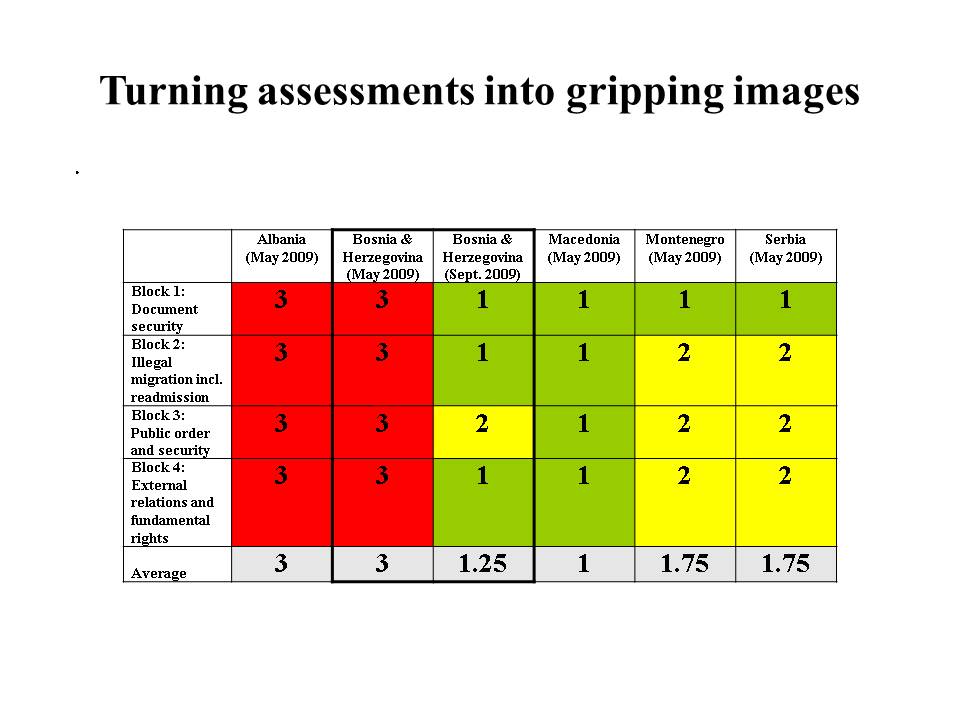Ideas matter – and few ideas mattered more in the Balkans in recent decades than the notion that different ethnic groups cannot live together in the long term, and that therefore it is inevitable that one day they need to be separated.
There are many policy makers today who appear to have forgotten the 1980s, and how such ideas – developed by intellectuals, turned into movies and novels by artists, picked up by politicians – prepared the ground for a decade of war, for millions of displaced and for more than 120,000 dead.
But there is no excuse to forget this recent past. This is why ESI will remind those who care about stability in the Balkans about the real reason peace took hold in the Balkans in recent years: a battle of ideas that was won at huge effort and cost.
Two ideas in particular were defeated.
The first: force is justified as a tool of politics to defend ethnic (tribal) group interests. Criminals can become legitimate national heros if they use their weapons in the name of their tribe. And the second: it is not natural for people of different ethnicities, religions, identities to live together. You are only ever save if you are in control. You can never be save as a minority.
In 2004 it looked for a moment as if these ideas would stage a breakthrough in Kosovo. During two days, Kosovo Serbs were viciously attacked by Kosovo Albanian nationalists. And immediately following these two days, leaders in Belgrade argued that this meant that coexistence had become impossible.
As we argued at the time, this logic clearly implied that coexistence was also impossible in Bosnia – where worse atrocities happened for years – and in parts of Macedonia (where fighting had erupted in 2001). It was impossible also in Croatia, and logically everywhere in the Balkans where minorities lived. And minorities lived everywhere: in Serbia, in Montenegro, in Kosovo.
And so we published a report in 2004 which we hoped had some impact on the debate: “The Lausanne Principle”. There we argued that the temptation of “simple” solutions to minority issues – by exchanging either territory of people – is deadly. We pointed to the example of the original Lausanne treaty – and what it meant for generations of Greeks in Turkey. We noted that the whole European (and US) strategy after the 1990s was based on the opposite idea: that Balkan nations were held to the standard of how they treated minorities, and that by showing that minorities were not only save but could live decent lives as equal citizens Balkan nations could prove that they were ready to join the rest of the EU.
Today tribal thinking is raising its ugly head also inside the EU. But this is not a reason to export this toxic idea to the Balkans. It is in particular a huge threat when it comes to the future of Kosovo – and a total betrayal of Kosovo Serbs, who did NOT flee their homes in 1999, nor in 2004. And who would now be told that unless they lived in or moved to Serbia they had no future.
We strongly believe that for this reason it is not a matter only for Pristina and Belgrade to settle their relations. Some things the EU should make clear are not compatible with European principles. For instance, any exchange of people against their will or under pressure would be totally unacceptable. And so should any exchange of territory based on ethnic principles.
Here is what we wrote in 2004 (excerpts):
On the violence in March that year
Five years into the international administration of Kosovo, two violent days in March 2004 have sorely tested the international commitment to a multiethnic Kosovo. Directed against Kosovo’s minorities and against the international mission itself, the violence has left many wondering whether UNMIK has the capacity to achieve its objectives in the face of open resistance.
This is a dangerous moment for international policy in the region. The urgent priority for the Kosovo mission and the incoming Special Representative of the Secretary General is to reaffirm the international commitment to multiethnic society, at both the diplomatic and the practical level.
This paper argues that the policies needed in response to the March riots must be based on the practical needs of Serbs living in Kosovo today. The paper finds that the current reality of Kosovo Serbs differs from the common perception in important ways. There are still nearly 130,000 Serbs living in Kosovo today, representing two-thirds of the pre-war Serb population. Of these, two-thirds (75,000) are living south of the River Ibar in Albanian-majority areas. Almost all of the urban Serbs have left, with North Mitrovica now the last remaining urban outpost. However, most of the rural Serbs have never left their homes. The reality of Kosovo Serbs today is small communities of subsistence farmers scattered widely across Kosovo.
Against this background, the paper argues that the Serbian government’s plan for creating autonomous Serb enclaves in Kosovo is dangerously flawed. Kosovo Serbs cannot be separated into enclaves without mass displacement of both Serbs and Albanians, increasing hostility and further compromising the security of Serbs. Any attempt to implement this vision leads inevitably towards renewed violence. If, as seems likely, the Belgrade plan is a tactical ploy aimed at securing the partition of Kosovo, it amounts to a betrayal of a large majority of Kosovo Serbs.
The paper argues that a sustainable solution for Kosovo cannot be based upon the Lausanne principle: the negotiated exchange of territory and population common in post-conflict settlements in the Balkans in the early 20th century. Serb communities in Kosovo will only be viable if the territory remains unified and Serbs are able to participate as full citizens in multiethnic institutions. The stakes are extremely high, both for Kosovo Serbs and for the international community, whose entire strategy in the region over the past decade has been based on a commitment to multiethnic society.
The essence of the ‘Standards before Status’ approach is that Kosovo’s institutions of self-government must take responsibility for ensuring that minority communities can live in Kosovo in safety and dignity. The paper proposes three practical measures for making this Standard a reality:
- a redoubling of efforts on return and repossession of property, with a view to completing the process by the end of 2005;
- ensuring that multiethnic security structures in Kosovo are strengthened, properly equipped and placed under the political responsibility of the elected Kosovo government, through a ministry of public security;
- carefully targeted reform of local government structures to ensure that Kosovo Serbs receive adequate public services in the places and circumstances in which they now live.
In addition, the paper argues that a renewed effort to overcome the division of Mitrovica would be the most positive response to the March riots, removing Kosovo’s most dangerous flashpoint and opening up possibilities for negotiated solutions on a range of highly contentious issues.
A fundamental precondition, however, is that the international community explicitly rule out any solution for Kosovo based on territorial bargains or the expulsion of minority populations. Whatever its final status, Kosovo must remain whole and undivided, providing a safe home for all of its traditional communities. The Contact Group and the European Union should serve notice that any partition scheme will be vetoed in the Security Council. They should also serve notice that an ethnically cleansed Kosovo will never be seen as fit for sovereignty. Let it be made clear to everyone concerned that the anti-Lausanne consensus that guides policy in Europe today is too solid to be shaken by an angry mob.
On Partition
The obstacles to implementing the Belgrade plan [of ethnic enclaves throughout Kosovo] are so great that it is difficult to avoid the conclusion that it is merely a negotiating ploy – a maximalist position designed to secure a tactical advantage. If so, what is the agenda that underlies it? The terms of the plan itself suggest an answer.
There is only one area of Kosovo where the proposal could be implemented without violent upheavals – the relatively compact Serb-majority area north of the Ibar. As the plan itself notes, being “close to central Serbia”, the north of Kosovo is safer and easier to defend than the Kosovo interior. Creating an autonomous province in Northern Kosovo would involve undoing some of UNMIK’s recent policy successes, particularly the establishment of a multiethnic court and Kosovo Police Service in North Mitrovica. However, many of the institutions required for an independent administration already exist.
There are those, both among the political class in Belgrade and in the international press, who believe that the complex institutional mechanisms required for “autonomy within autonomy” are impractical, and would rather see a simpler solution: the partition of Kosovo into a fully independent, Albanian south, and a northern part that would remain within Serbia. They believe that this is an outcome on which both sides might agree – the Kosovo government in order to secure independence for most of Kosovo, and the Serbian government as a face-saving compromise.
As one commentator in the Serbian daily Kurir put it: “We should either tell the remaining Kosovo Serbs that they cannot survive there and that they should move to central Serbia, or we should try to divide what still might be divided, thus at least a part of Kosovo really to be part of Serbia.” Cedomir Antic, a historian and member of the liberal group G17 Plus, proposed drawing a “green line” as in Cyprus. He suggests a Security Council resolution to divide the province according to the census data from 1991. Antic erroneously assumes that if “the Serbian canton includes the northern part of Kosovo plus the part around Gracanica,” then “90 percent of Serbs would enter the entity.”
There are also commentators on the international side who consider partition an unavoidable, if not desirable, outcome. As Ian Traynor put it in The Guardian: “The Serbian elite is not so dismayed to see Kosovo Serbs driven out of their villages. It thinks this will reinforce the case for partition. Albanians too may ultimately back a partition that maximises territory and entrenches an independent Kosovo. With a few exceptions they want Kosovo ethnically pure. In the middle stands the NATO-led international administration, which for five years has been pushing a multi-ethnic, multicultural Kosovo that neither side wants.”
Those opposed to partition have pointed to the dangers for Presevo or Macedonia, if the international community acquiesces in further border changes. In fact, the most immediate danger is to the many Serbs (up to 75,000) living in the Albanian-majority south. If the international community were to accept partition, caving in to demands for territorial separation from extremists on both sides, it would leave itself in an extremely weak position to protect the minorities left in the south. This is precisely the scenario that would lead to an intensification of mob violence in Kosovo and the expulsion of the remaining Serbs.
It is not likely that the international community will openly acquiesce in the partition of Kosovo, nor even that the Serbian government will officially advocate abandoning the Serbs living in the south of Kosovo. The real danger is that persistent talk of territorial solutions, along the lines of the Belgrade plan, will set in motion a chain of events that will make this outcome inevitable.
Dangerous ideas
At the turn of the 19th century, when the nations of South Eastern Europe were emerging from a crumbling Ottoman empire, state-building was often accompanied by the brutal expulsion of ethnic and religious minorities. When the Great Powers sat together to redraw the map of the region following major conflicts, they considered forcible population exchange to be a legitimate technique for solving “minority questions”. In 1913, the treaty that followed the Second Balkan War included a Protocol on the exchange of population. In 1919, Greece and Bulgaria approved a Convention Respecting the Reciprocal Emigration of their Racial Minorities. In 1934, 100,000 Muslims were resettled from (Romanian) Dobrudja to Turkey. It was a brutal approach: solving minority problems by eliminating the minorities themselves.
The most infamous of these agreements was the 1923 Treaty of Lausanne, which ended the Greek-Turkish war in Asia Minor. At Lausanne, the Greek and Turkish governments and the Great Powers stated as the very first article of the treaty the principle of preventive exchange of population:
“As from the 1st May, 1923, there shall take place a compulsory exchange of Turkish nationals of the Greek Orthodox religion established in Turkish territory, and of Greek nationals of the Muslim religion established in Greek territory.”
The result was the forced displacement of almost 1.5 million people, destroying communities that had existed since ancient times. While many had already been displaced by conflict, there were still over 200,000 Greeks in Anatolia and more than 354,000 Turks in Greece. Many of these were “prosperous and satisfied, feeling secure and having no desire to abandon their homes.” As the Greek prime minister noted at the time, “both the Greek and the Turkish population involved… are protesting against this procedure… and display their dissatisfaction by all the means at their disposal.” With the principal of territorial separation accepted at the international level, however, there was nowhere to appeal, and the expulsions continued to their bitter conclusion.
In the first half of the 1990s, the shadow of Lausanne loomed large as Europe’s democratic governments met once again to decide the fate of South Eastern Europe. During interminable negotiations on the Bosnian war, the leaders of the warring parties sought to reinforce their territorial claims by expelling minority populations. As one Bosnian observed at the time, “The maps of a divided Bosnia-Herzegovina passed around at international conferences have become more of a continuing cause for the tragedy that has befallen us than a solution.” The international community faced a choice between acquiescing in a territorial solution based on ethnic cleansing, or finding a way to reverse the ‘facts on the ground’ which had emerged from the conflict.
The year 1995, with the horror of the Srebrenica massacre and the signing of the Dayton Agreement, marked both the nadir and a turning point in the international approach to the region. The peace agreement could not immediately reverse the injustices of the war. However, it did create the framework of a multiethnic state, and the promise that those expelled from their homes would be able to choose whether or not to return. Annex 7 of the Dayton Agreement contains a provision that is the exact opposite of Article 1 of the Treaty of Lausanne: “All refugees and displaced persons have the right freely to return to their homes of origin. They shall have the right to have restored to them property of which they were deprived in the course of hostilities.”
In the immediate post-war environment in Bosnia and Herzegovina, with the perpetrators of ethnic cleansing still firmly in power, the prospects of reintegrating the communities seemed remote. During 1996, continuing displacement far outnumbered minority returns. In 1998, reconstructed houses were still being torched by angry mobs incited by shadowy figures. Many believed that the idea of restoring a multiethnic Bosnia was a dangerous illusion that would only bring further violence. They argued that the only ‘realistic’ path to security was the partition of the country.
Yet the international response was remarkable. With every violent attack on returnees, the international determination to restore a multiethnic Bosnia and Herzegovina was strengthened. SFOR took a more vigorous approach to supporting return. International reconstruction programmes were made faster and more flexible. In 1999, an enormous international campaign was launched to implement the property laws that enabled displaced persons to recover homes they had lost during the war. By 2000, the tide had turned. Bosniacs and Croats were returning to homes across Central Bosnia, breaking down the armed enclaves left over from the war. By 2002, Bosniacs were returning in significant numbers across Republika Srpska. By 2004, over 200,000 families (around a million people) had recovered possession of their properties. With the success of the return movement, the vicious ideology of Milosevic, Karadzic and Tudjman was thoroughly discredited. Today, as international troops and police are steadily reduced, it is local, multiethnic police forces which provide security for minorities across Bosnia and Herzegovina.
It appeared that the international community had finally developed a principled and effective answer to the vicious logic of ethnic separation. In Kosovo in 1999 and in the Presevo valley in southern Serbia in 2000, the international community responded decisively. When an armed uprising in Macedonia in 2001 threatened to escalate into civil war, there was an immediate intervention to preserve multiethnic society. Each time, the settlement was founded on the conviction that different ethnic communities are able to live together. There were always some who believed that multiethnicity was naïve, utopian or dangerous, and that partition was the only route to stability. They were, however, disregarded. Not only was ethnic cleansing condemned as abhorrent, but systematic programmes to restore property rights and freedom of movement were developed to reverse the new realities created through violence. The very idea that stability could be achieved through exchange of populations was decisively rejected on both moral and pragmatic grounds. Since Srebrenica, international policy in the Balkans has been based on an anti-Lausanne consensus.
There are those who believe that acquiescing in the partition of Kosovo would be a simpler and more pragmatic solution than continuing to defend multiethnic society. Yet the Belgrade plan or any suggestion of partition are premised on a mass resettlement of population – a miniature version of the population exchanges agreed between Turkey and Greece in Lausanne. They are neither simple nor pragmatic. Forcible expulsions (whether officially sanctioned or carried out by an angry mob) would raise tensions to an impossible degree. The people in question – rural communities of subsistence farmers – have shown throughout the past decade that they are deeply attached to their traditional homes and lands, and would only leave under direct threat of violence. As one student of earlier Balkan population exchanges noted:
“The attachment of the individual to the soil where he was born is so deeply rooted that only the fear of an imminent peril to his life may force him to emigrate… On the basis of past experience, one is forced to conclude that the transfer of populations is intimately connected with the prevalence of extensive political upheavals.”
Any territorial exchange could only be accomplished through upheavals more extensive than any Kosovo has seen to date. A solution built upon further ethnic cleansing would be a dramatic failure for one of the most substantial post-conflict interventions ever undertaken, and a huge loss in credibility for the multilateral institutions – the United Nations, NATO, the OSCE and the EU – which are responsible.
It is a measure of the crisis of confidence on the international side that Serbian proposals for ethnic separation were greeted as “a good basis for resuming dialogue” by former Special Representative of the Secretary-General, Harri Holkeri. No longer confident in its ability to defend multiethnic society, the international community is once again flirting with the Lausanne principle. This is a dangerous moment for international policy in the region. Rearticulating a commitment to a multiethnic Kosovo is the most pressing priority for the new SRSG and the wider international community.
Needed: an Anti-Lausanne Consensus
In 1955, a rumour, subsequently proved untrue, spread through Istanbul that Ataturk’s birthplace in Thessaloniki had been vandalised by Greek nationalists. The result was serious rioting in the remaining multiethnic areas of the city, leading to numerous deaths and hundreds of looted and destroyed houses. As one Greek eyewitness noted at the time:
“It lasted less than twenty-four hours… Everyone shut themselves into their houses. Some were injured. They [the mob] destroyed the priest’s house. They tried to set fire to the church, but it would not burn… They did more damage in other places. We (the Greeks) were their main targets. But they also attacked Armenian and Jewish houses, probably without realising. We were afraid they would attack again. That was when people gradually began to emigrate.”
This and many similar episodes were the inevitable product of the Lausanne principle: the process of expulsion of ethnic groups – Greeks from Turkey; Turks from the Balkans – continued over subsequent decades until it reached its inevitable, tragic conclusion. By the 1960s, the idea of ethnic separation had spread to Cyprus, with predictable results. The spirit of Lausanne proved extremely difficult to put back into the bottle.
Will the riots of March 2004, also started by an unsubstantiated rumour and resulting in senseless destruction, set in motion a similar process in Kosovo? Any student of South East European history would find plenty of reasons to be pessimistic. After all, today there are no Greeks in Varna or Istanbul; no Turks in Belgrade or Thessaloniki; no Bulgarians or Circassians in Northern Dobrudja; no Germans in the Vojvodina. Once population transfers became accepted as a legitimate solution to ethnic conflict, it virtually ensured that this was the way in which all ethnic conflicts would end up being resolved.
Yet looking back over the decade since the fall of Srebrenica and the Dayton Peace Agreement, there is also cause for optimism. The international commitment to the right to return, not just as a legal principle but also as a practical reality, has offered a genuine alternative to the Lausanne principle. As a direct consequence, despite the horrific violence of the 1990s, today there are Croats in Travnik, Bosniacs who have reconstructed mosques in Prijedor, large Serb communities in Drvar, Macedonians and Albanians living shoulder to shoulder in Tetovo, Albanians and Serbs side by side in Bujanovac. None of these were easy successes. There was no shortage of violent challenges to multiethnicity: arson of Bosniac houses across Republika Srpska in 1996; riots in Brcko in 1997 which drove out the international officials; murder of Croats in Central Bosnia in 1998; riots against Serb returnees in Drvar in 1998; the destruction of mosques and churches in Presevo and Western Macedonia in more recent times. The violence showed how high the stakes are. Yet none of these events shook the international conviction that a stable Balkans could not be based on the Lausanne principle. By holding its line against territorial solutions, the international community has succeeded in stabilising large parts of the region.
Has the international community’s commitment to multiethnicity been destroyed by the March riots, leading to a gradual acquiescence in the partition of Kosovo? Or will it lead to a strengthened international commitment to multiethnic institutions and a non-negotiable right to return? Much will depend on the response of the international community in the coming period, and the lessons which UNMIK draws from its experience. Much will also depend on the political choices made by politicians in Belgrade and Pristina.
While most of South Eastern Europe is looking forward to joining a Europe which is very different from that of the Lausanne era, the logic of ethnic separatism continues to find adherents in parts of the former Yugoslavia. Giving in to them at this late stage would not only be a betrayal of minority communities across the region, it would also compromise the basic values on which today’s European Union is constructed.
To ensure that the destructive spirit of Lausanne stays in the bottle, three things are required. Efforts to support return and property repossession need to be redoubled. Multiethnic law enforcement institutions need to be strengthened, properly equipped and made politically accountable. Institutions able to deliver effective public services to Kosovo’s minorities in the places and circumstances in which they now live need to be designed and established.
A fundamental precondition for all this to happen, however, is that the international community must explicitly rule out a solution for Kosovo based on territorial bargains or the expulsion of minority populations. Whatever its final status, Kosovo must remain whole and undivided, providing a safe home for all of its traditional communities. The Contact Group and the European Union should serve notice that any partition scheme will be vetoed in the Security Council. They should also serve notice that an ethnically cleansed Kosovo will never be seen as fit for sovereignty. Let it be made clear to everyone concerned that the anti-Lausanne consensus that guides policy in Europe today is too solid to be shaken by an angry mob.


